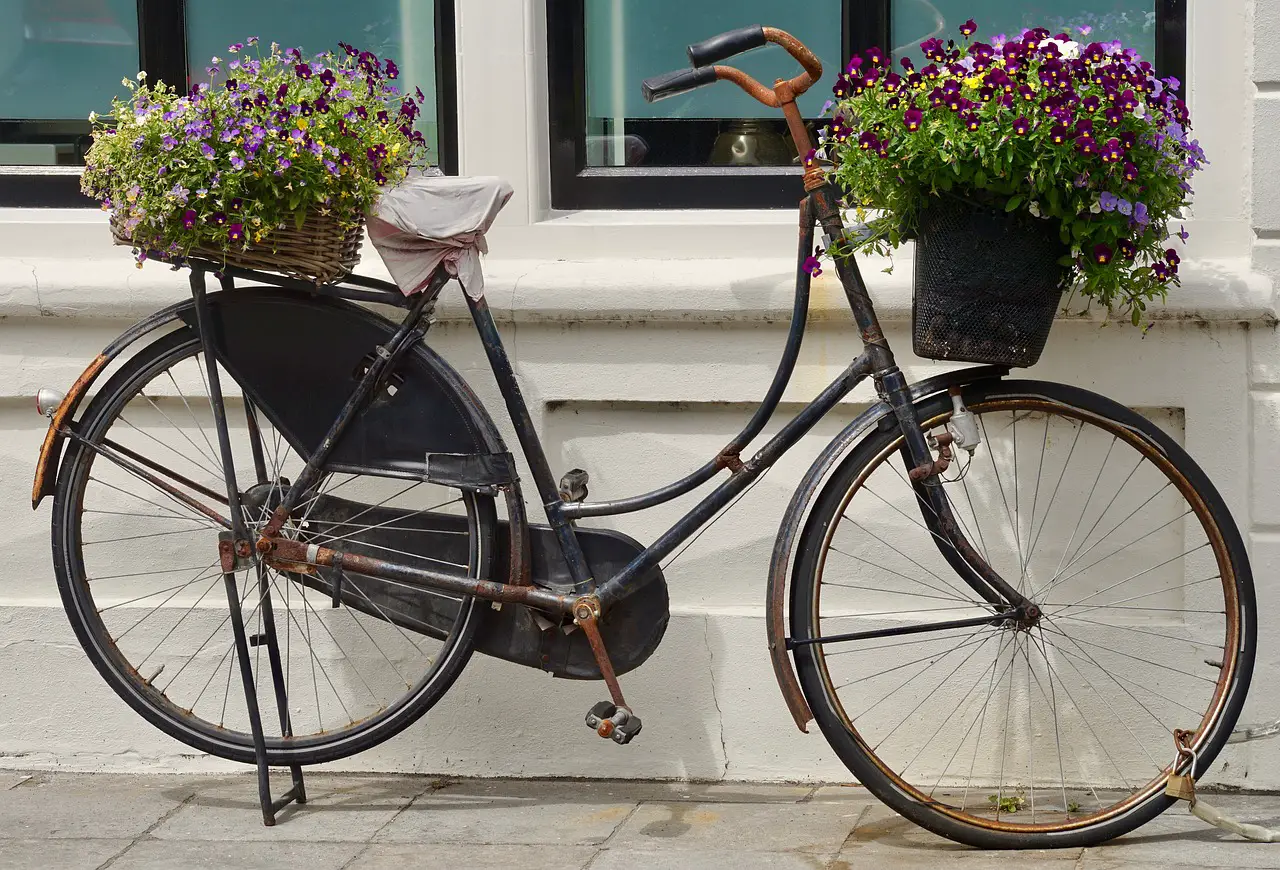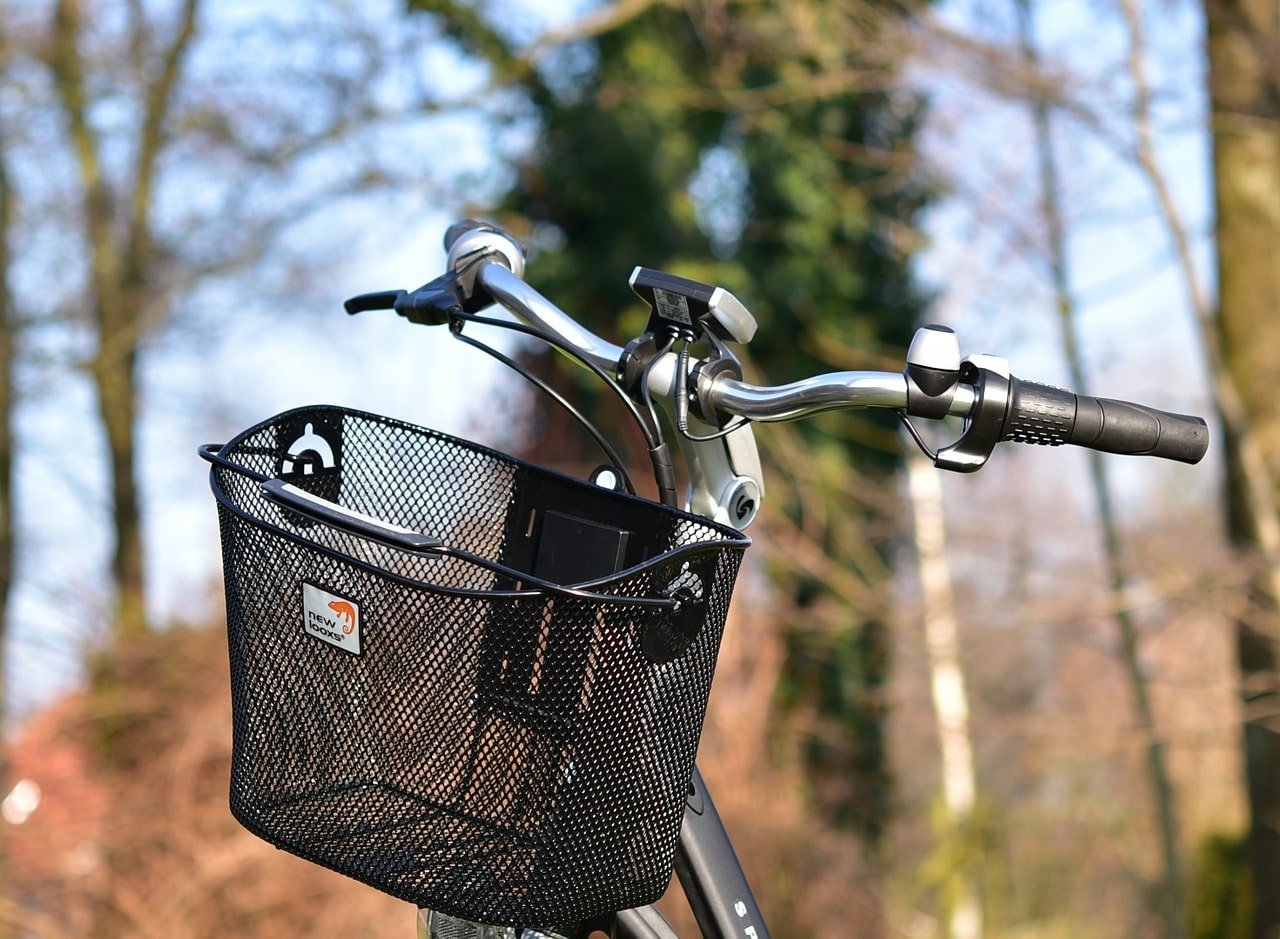How To Remove Rust From Bikes
Hi friend, welcome back to BTYCC. I hope you are doing well. In this article, we will learn how to remove rust from bikes. So let's start with some basic knowledge about bikes first.
Rust is a common problem for cyclists. Many things can cause it, but the most important thing to remember when rust on bikes is that you are not alone in this struggle! There are plenty of other people out there who have had similar problems, and they've found solutions too. We're going to share some tips with you today so that you don't end up spending hours trying to remove rust from your bicycle.
What Causes Rusting?

There are two main reasons why bicycles tend to rust: moisture and heat.
The first one is pretty obvious – if you ride through rain or snow, water will collect inside your frame. This means that over time, as the metal dries out, corrosion occurs. It would be best if you also tried to avoid riding in wet conditions whenever possible.
Heat is another significant factor. As mentioned above, cold weather tends to dry out metals faster than warm ones. So if you spend long periods outside, you could quickly develop rusted bike parts. Even worse, if you leave your bike exposed to direct sunlight, you run the risk of melting paintwork and causing serious structural damage.
If you want to know what kind of solution works best against each type of rust, check out our guide here.
How To Remove Rust From Bikes?
Now that you understand the basics behind rust let's get into removing it. We'll start with the easiest method - using baking soda.
Baking Soda For Bike Cleaning
This is probably the simplest way to deal with rust on your bike. All you need to do is mix equal amounts of baking soda and hot water until you reach a paste-like consistency. Then apply this mixture directly onto any areas of rusty metal. Leave it overnight before washing away the excess powdery residue with soap and water.
This process has been used successfully by countless riders around the world. However, it does require patience because you must wait at least 24 hours after applying the treatment before washing it all down. Also, note that you cannot use this technique on painted surfaces.
If you have baking soda paste, you can try mixing it with vinegar instead of plain water. The acidity of the vinegar helps dissolve the baked-on material while leaving the rest intact. You should only use this approach if you're confident about your skills since it requires more effort than just using baking soda.
Vinegar For Bike Cleaning
Another popular choice among DIY enthusiasts is vinegar. Mix 1 cup of white distilled vinegar with 2 cups of water. Apply this mixture to the affected area and rinse thoroughly afterward. Vinegar is great for removing rust from aluminum components like brake pads and handlebars.
Lemon Juice For Bike Cleaning
It's not worth scratching or compromising the bike's finish if you want to remove surface rust. Mix 3 tablespoons of lemon juice with 4 gallons of water. Use this concoction to wash down any spots of rust. Rinse thoroughly afterward and allow the surface to air dry completely. Lemon juice can help loosen up stubborn deposits, but it isn't strong enough to free them.
Salt Solutions For Bike Cleaning
Mix 5 teaspoons of table salt with 10 quarts of water. Pour this liquid into a bucket and soak your bicycle for about 30 minutes. Afterward, scrub the entire machine with a stiff brush. Make sure not to miss any nooks and crannies! Once finished, rinse everything thoroughly with fresh water. This will leave your bike looking brand new again.
Removing Rust With A Wire Brush
The best tool for removing rust from bikes is a wire brush. This type of brush consists of thousands of tiny wires arranged in parallel rows. The bristles are usually covered in nylon or polyester fiber. You should always wear gloves while working with a wire brush since they will easily cut through the skin if exposed to friction.
To begin, wet the entire surface of the object being cleaned with warm water. Next, place the wire brush into the solution and scrub vigorously back and forth over the whole surface. Continue doing this until most of the rust flakes come loose. Finally, wipe dry using a soft towel.
Using Sandpaper For Cleaning Bike Components
Sandpaper is another effective way to get rid of rust. Start by soaking the component in hot water for 10 minutes. Then apply a thin layer of oil to prevent the paper from sticking to the metal. Afterward, carefully lay out the sandpaper and start smoothing away the rust. Be careful not to scratch the finish. When finished, wash the item under running water and let the air dry.
Chemical Rust Remover
Rust Remover Spray
A spray made up of citric acid mixed with ammonia. Use this product sparingly so as not to harm other materials.
Metal Polish
An abrasive compound containing silica sand and alumina oxide. Rubbing this polish across the surface helps remove stubborn rust spots.
Steel Wool Pad
These pads are made up of steel wool fibers coated in wax. These pads can help loosen dirt embedded deep within the material. They're also helpful when polishing chrome or stainless steel.
WD-40
This lubricant contains petroleum distillates that work well at loosening rust. Rub WD-40 onto the rusty spot and wait 15 seconds before wiping away excess residue. Repeat this process several times until all traces of rust have been removed.
How To Remove Rust From Bike Frame?

The first step would be to check what kind of material the frame is made of. The best way to do this is to look at the serial number located somewhere on the frame itself. Once you know which steel brand was used to manufacture the frame, you can start looking for information about its specific properties.
There are many different types of steel, each having unique characteristics. Some are more resistant to heat than others, making one better suited for outdoor activities. Others have higher tensile strength, allowing them to withstand greater loads without breaking.
Knowing the exact composition of the metal allows you to choose the right tool for removing rust. A wire brush works well for light-duty applications, whereas a grinder is ideal for heavy-duty jobs like grinding through thick layers of paint. In addition, some people prefer using sandpaper instead of abrasive wheels. Sandpapers work great for smoothing rough surfaces, although they cannot reach deep enough to remove rust completely.
The next thing you'll need to consider is whether it's worth repairing the damaged part. You might decide not to fix it for two main reasons: the cost involved and the time required.
Repairing parts cost money, and depending on the extent of the damage. It could take several hours to complete. On top of that, you'd still need to pay someone else to fix it afterward. Alternatively, you could just buy a replacement component. If you're lucky, there will be a space available in stock. Otherwise, it would help if you tried contacting the company that manufactured the original part. Chances are, they won't mind if you order another one.
The final option is to throw away the whole frame simply. This isn't recommended unless you've tried everything possible to save it. Even though it sounds drastic, sometimes throwing out excellent equipment is necessary. You don't want to end up paying extra fees when buying a new one later down the line.
How To Remove Rust From Handlebars?

You can remove rust by using some everyday household items like baking soda, vinegar. The best way to remove rust from handlebars is with a wire brush. To do that, use a wire brush to scrub the area thoroughly until all traces of rust disappear. Then rinse the bars under running water before drying them.
If you find yourself unable to get rid of the rust, you can always resort to chemical methods. For example, you can soak the affected area in baking soda solution overnight. Afterward, wash the bars with soap and warm water. Repeat these steps until the problem has been resolved.
You can also apply WD40 spray directly onto the rusty spots. However, make sure to wear gloves while handling the product. Also, avoid spraying near electrical components since WD40 contains solvents that may cause short circuits or fires.
How To Remove Rust From Bike Spokes?
Spoke rust poses a similar threat as rusty handlebars. However, unlike handlebars, spokes aren't exposed to direct sunlight. Instead, they tend to collect moisture which causes corrosion. As such, you shouldn't worry about this type of rust. All you need to do is wipe the rusted areas with soapy water. Rinse the spoke wheel after washing it thoroughly. Dry the wheel again before storing it inside a dry place.
The best way to prevent this kind of rust is to keep your bicycle correctly maintained. Make sure to inspect the tires and replace any worn ones regularly. Clean the chain periodically to ensure its smooth operation. Finally, lubricate the bearings at least once per year.
How To Remove Rust From Bike Rims?
Rim corrosion can occur at any point along with the tire-rim interface. The most common areas include the bead seat area, the sidewall, and the tread area. Rim rust usually starts near these points because moisture collects here during rainy conditions. When this happens, the steel becomes soft and weakens over time. Eventually, the weakened material breaks down and flakes off.
Removing rust from bicycle rims requires patience and persistence. First, start by soaking the affected section overnight in warm soapy water. Next, scrub the surface vigorously with a stiff wire brush. Rinse the area thoroughly after each pass. Continue doing this process until no more flaking occurs. Now, apply a thin layer of penetrating oil. Let the treated area dry naturally. Repeat the above steps once again. Finally, replace the old tires with new ones.
How To Remove Rust From Bike Chain?

Chain rusting isn't uncommon among cyclists who ride on rough terrain. This condition often results when dirt particles are trapped between the links of the chain. Dirt acts as a magnet attracting iron ions present in the metal. These ions combine, forming tiny crystals called rust. Once assembled, the rust will continue growing if left untreated. Eventually, the entire link will become corroded.
To solve this issue, first, take out the damaged parts of the chain. Then, use a wire brush to remove all traces of debris from the chain. Wash the chain under running tap water using a mild detergent-like dishwashing liquid. Use a rag soaked in vinegar to polish the chain. If necessary, repeat the procedure several times until there's no trace of rust remaining. Replace the chain immediately after waxing.
Preventing Rust On Bikes
As well as being careful about keeping your bike clean, it would help if you made sure that any areas prone to rust get regular maintenance. For example, if you notice rusty patches around bolts or rivets, take them off before becoming permanent fixtures. Also, look at all welds carefully; if you see signs of cracking, then repair those immediately. Finally, always use good quality lubricants such as WD-40 or grease. These products help protect your bike from rust while still allowing it to move freely.
Once you've taken care of the basics, you need to think about preventing further rusting. Here are three ways to do this:
Use A Spray Primer
Spray primers work by coating surfaces with a thin layer of protective material. They usually contain zinc oxide, which helps stop oxidation from occurring. Zinc oxide has been used since ancient times because it doesn't harm plants or animals. However, it does react badly with certain paints, so you shouldn't apply it directly onto painted surfaces. Instead, mix it into a suitable solvent and spray it onto bare metal using a high-pressure airbrush. Once applied, let the surface sit overnight before applying your final coat of paint.
Keep Your Bike Indoors
This might sound like a strange suggestion, but indoor cycling does work. Regularly doing this reduces the amount of time spent outdoors and limits exposure to both sun and wind. It can be done either in a gym or at home, depending on whether you have access to a dedicated space for exercise equipment. Alternatively, you could buy some stationary bikes and set up your makeshift studio!
Clean your chain regularly.
This isn't something we recommend every day, but when you decide to give it a go, don't forget to wipe down the entire drivetrain afterward. Chain lube won't remove dirt, so thoroughly cleaning it ensures no grit gets stuck between links. And remember not to rub too hard – gentle rubbing motions only.
Don't Neglect Your Brakes
Brake pads wear away after extended usage, especially if you ride frequently. To extend their life, you should change them once per year. If you find yourself struggling to keep track of how often these things need replacing, there are online calculators available to help you figure out exactly how much brake fluid you require.
You also need to ensure that your calipers aren't leaking oil. Otherwise, corrosion will occur inside the mechanism. This means checking for leaks whenever possible, especially when you want to center the brakes and ensure they work properly.
Avoid Saltwater
Saltwater corrodes metals very quickly, meaning that even small amounts of sea spray can cause damage. So, try to avoid riding near the coast, and never leave wet clothing lying around outside. Also, make sure that any tools you use while working on your bicycle are kept dry.
Check Your Frame Regularly
If you notice any cracks appearing on your frame, take action immediately. Cracks allow moisture to get trapped within the structure, leading to corrosion. Fortunately, most frames come equipped with an anti-corrosion treatment called chromate conversion. Clean off all existing rust from the area where the crack appears, and follow the instructions provided by the manufacturer.
Use Proper Lubrication
If you want to prolong the lifespan of your components, you must always use the correct type of grease. For example, oils explicitly designed for bearings tend to last longer than those meant for chains. Always read the label before applying anything to your bike.
Get Rid Of Rusty Bolts
Rusty bolts are extremely dangerous because they can loosen unexpectedly. They could then fall into moving machinery or hit pedestrians in busy areas. It may be tempting to ignore such problems, but doing so could lead to serious injury. Instead, replace old bolts with new ones as soon as you spot rusting.
FAQS
Should You Wash Your Bike With Water?
Yes! Washing your bike with soap and water will remove dirt, grime, road tar, and grease accumulated on your frame and parts. This helps keep your bike looking good longer. But be careful not to wash away protective layers like clearcoat paint or waxes. If you do decide to wash your cycle, always test out a small amount first. You don't want to ruin your expensive ride accidentally.
How Effective Is WD40?
WD40 works excellent when applied sparingly. Spray some onto a rag and wipe down all exposed metal surfaces, including brake pads, derailleurs, shifters, etc. Then let everything air dry. Do this every few months if possible.
How Often Should You Clean Your Bike?
It's recommended that you clean your bike twice per year. That means washing it inside and outside. Also, make sure to check underneath the saddle and pedals for dust buildup. Dust tends to collect there, especially around the rear axle. Finally, inspect the underside of the wheels for signs of wear. Wheels should have minimal play but still, spin freely without wobbling. If yours are showing excessive wear, consider having them replaced.
Bonus
Conclusion
The above article has given you tips on how to prevent rust from forming on your bike. I hope you like it. Please put the comment below if you found this post helpful. Thanks 🙂













![WD-40 Original Formula, Multi-Use Product with Smart Straw Sprays 2 Ways,12 OZ [12-Pack]](https://m.media-amazon.com/images/I/512uw0hjm8L._SL160_.jpg)

